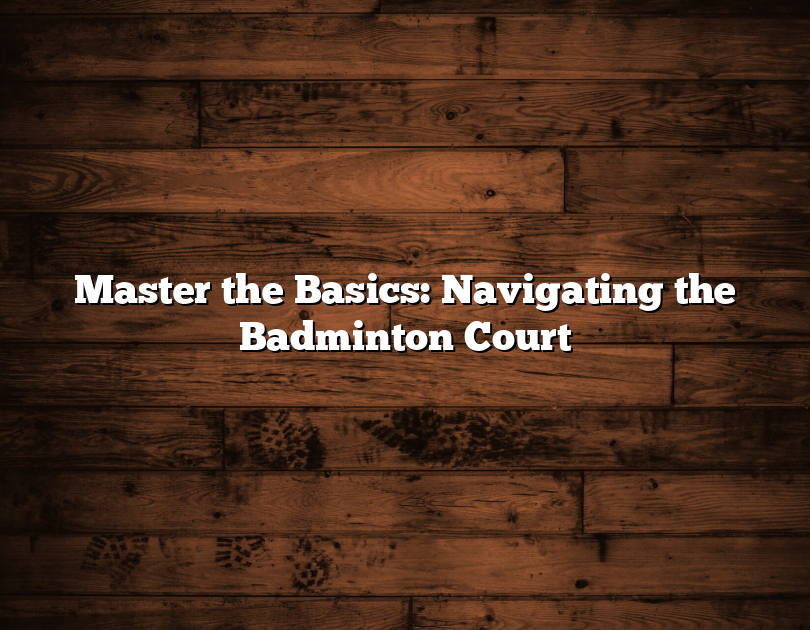Badminton is a fun and fast-paced sport that can be enjoyed by people of all ages and skill levels. Whether you are a beginner or a seasoned player, having access to a properly built and maintained badminton court is essential for a great playing experience. If you have a group of badminton enthusiasts in your community, building a court is a great way to bring people together and promote a healthy activity. In this article, we will discuss the steps to building and maintaining a badminton court, its history and importance, and how it is celebrated.
The History of Badminton
Badminton has a long and rich history that dates back to ancient civilizations. The game was originally played in China as a form of entertainment and was known as “ti jian zi,” which translates to “shuttlecock kicking.” It was later introduced to England by British soldiers, and the game was further developed and popularized in the mid-19th century. It was officially recognized as a sport in 1893, and the first world championship was held in 1934. Today, badminton is played and celebrated all over the world.
How to Build a Badminton Court
To build a badminton court, you will need a large and flat space measuring at least 44 feet by 20 feet. If you have access to a gym or a large indoor space, that would be ideal. If not, you can build an outdoor court in your backyard or community park. Here are the steps to follow:
Step 1: Prepare the Area
First, you need to clear the area of any debris, rocks, or other obstacles. Level the ground if necessary, and make sure it is not too steep or uneven.
Step 2: Mark the Dimensions
Using measuring tape and string, mark the dimensions of the court. The full-size badminton court is 44 feet long and 20 feet wide. However, if you have limited space, you can also build a smaller court with dimensions of 33 feet by 16 feet.
Step 3: Install the Posts
Next, install two tall poles on each side of the court, making sure they are accurately placed at the corners. The poles should be at least 5 feet above the playing surface and anchored securely to the ground.
Step 4: Attach the Net
Attach the net to the poles by pulling it tight and securing it at the appropriate height, which is 5 feet in the center and 5 feet 1 inch at the sides.
Step 5: Add the Boundary Lines
Use markers or chalk to add the boundary lines, including the single sideline (2 feet 6 inches from the centerline), and the doubles sideline (1 foot 6 inches from the centerline).
Maintaining a Badminton Court
Maintaining your badminton court regularly is crucial to ensure a safe and enjoyable playing experience. Here are some tips to keep in mind:
Keep it Clean
Make sure to sweep the court regularly to remove any debris, leaves, or dirt that may have accumulated. You can also use a leaf blower for a more efficient clean-up process.
Repair Any Damages
Inspect the court for any damages, such as cracks or holes, and make necessary repairs to avoid any potential injuries to players.
Maintain the Net
Check the net regularly for tears or broken strings. Replace the net if necessary to ensure it is at the correct height and tension.
Keep the Posts Secure
Check the poles and make sure they are still sturdy and securely anchored to the ground. Tighten or replace any loose bolts if needed.
Re-Line the Court
If you notice that the boundary lines are fading, it’s essential to re-line the court to ensure accurate play.
The Importance of a Properly Built and Maintained Badminton Court
Having access to a well-built and maintained badminton court is essential for promoting physical activity and a sense of community. Badminton is a sport that requires agility, coordination, and quick reflexes, making it a fantastic way to improve overall fitness and mental sharpness. A well-maintained court also reduces the risk of injuries and provides a better playing experience for all players.
Celebrating Badminton Courts
Every year, badminton fans around the world celebrate International Day of Sport for Development and Peace on April 6th. This day recognizes the power of sport in promoting peace, unity, and social change. Many communities organize badminton tournaments and other events to celebrate this day and raise awareness of the importance of physical activity.
Fun Facts about Badminton Courts
– The longest badminton rally in a tournament was 123 shots, recorded in 2016.
– Badminton is the second most popular participation sport in the world, with over 200 million players.
– A shuttlecock can reach speeds of up to 200 miles per hour.
– In 1992, badminton officially became an Olympic sport.
Final Thoughts
Building and maintaining a badminton court requires some effort, but the benefits are well worth it. Whether you are a casual player, a competitive athlete, or a community organizer, a well-maintained badminton court allows you to enjoy the sport to its fullest potential. So gather your friends, grab your rackets, and start playing your

